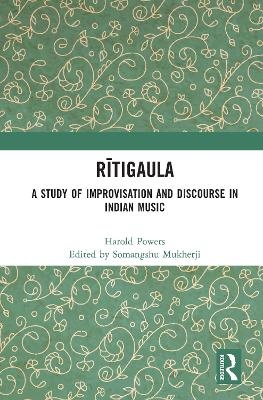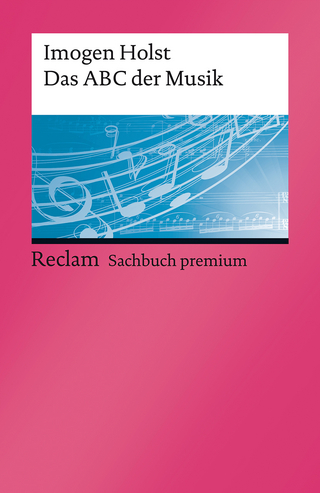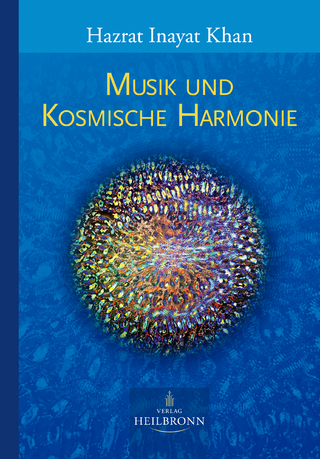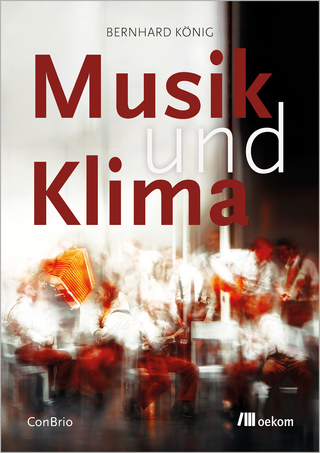
Rītigaula
Routledge (Verlag)
978-0-367-43001-6 (ISBN)
This book, authored by the late Princeton music scholar Harold Powers, discusses a single Indian rāga called Rītigaula. Rītigaula’s pitch structure, conventions surrounding its performance, and its treatment in historical Indian music treatises are comprehensively described. Powers’s unique approach to theorizing rāga examines rāga structure and meaning in this monograph too, from the perspective of musical communication and discourse. From within this perspective, Powers shares his thoughts about music’s connection to language, and the relationship between rāga expression and linguistic communication.
Somangshu Mukherji is Assistant Professor of Music Theory at the University of Michigan.
1. The language of South Indian classical music
1.1. Improvisation of formal music
1.1.1. Improvisation, music, and language
1.1.2. The nature of rāga1.2. Some visual representations of rāga Rītigaula
1.3. General aspects of composition and improvisation in South Indian music
1.3.1. Form and text in composition
1.3.2. Style in improvisation: the temporal domain of flow1.3.3. Other temporal domains: pace, position, and frequency
2. The morphology of rāga Rītigaula
2.1. Basic elements of musical form
2.1.1. Aspects of pitch space and Sanskrit general phrase types
2.1.2. Phrase types and nuclear motives
2.2. Motivic structure in Rītigaula
2.2.1. The nuclear motives of Rītigaula
2.2.2. Simple motivic expansion in the rising and higher-falling categories
2.2.3. Complex motivic expansion in the lower-falling category
2.3. Thematic compounds
2.3.1. The higher-register thematic compound
2.3.2. The lower-register thematic compounds
3. The syntax of rāga Rītigaula
3.1. Phrase structure, order, and ambitus
3.1.1. Phrase sequences in the – 7 melodic ambitus
3.1.2. Phrase sequences in the – 5 melodic ambitus
3.2. The exposition of Rītigaula in the lower register
3.2.1. The two ambitus used for the lower register
3.2.2. The two thematic nuclei of the lower register and their extensions
3.3. The exposition of Rītigaula in the higher register
3.3.1. The thematic nuclei and exposition of the higher register
3.3.2. Further instances of higher-register exposition and elaboration
3.3.3. Internal and external marks separating off the higher-register exposition
3.4. Rhetorical procedures in the improvisation
3.4.1. Rapid passage work in improvisation and composition
3.4.2. The improvisatory procedure of end-marked phrases
3.5. Form, style, and procedure in improvisation
4. Musicological method and Indian music
4.1. Linguistic models and music analysis
4.1.1. Models
4.1.2. Levels
4.2. Indian music and historical musicology
4.2.1. Composition, improvisation, and the creative process in Indian music
4.2.2. The "work of music" as historical datum and aesthetic object
4.2.3. Ethnomusicology and "art" music
5. Sanskrit musical theory in the 16th–18th centuries
5.1. The Indic tradition for musical discourse
5.2. The Tanjore tradition in historical context
5.2.1. The treatise Sangīta-sudhā and the Shāhji manuscripts
5.2.2. Scholastic conflict between old and new doctrine
5.3. The new doctrines of Sangīta-sudhā5.3.1. The new tonal system of the 16th–18th centuries
5.3.2. Sangīta-sudhā’s six rāga components and the Shāhji manuscripts
5.3.3. The four essential parts of a rāga presentation in 17th-century Tanjore
5.4. Descriptions of Rītigaula in the treatises
5.4.1. The similarity of the modern and the 17th-century Tanjore Rītigaula
5.4.2. The description of Rītigaula in the Sangīta-sudhā5.4.3. Rītigaula in the treatise Sangīta-sārâmròta5.4.4. Rītigaula in treatises not from Tanjore
6. Pre-modern and modern discourse in rāga Rītigaula
6.1. Extemporized discourse in Rītigaula in the pre-modern sources
6.1.1. The general shape of the improvisation and its introductory portion
6.1.2. The exposition sections
6.1.3. The passages returning to a constant theme
6.1.4. The concluding portion
6.2. Comparison of 17th-century and 20th-century extempore discourse in Rītigaula
6.3. Improvisation, the concept of rāga, and the premises of musical thought
Appendix 1. Visual models of Rītigaula
Chart I. Kriti "Jananī ninnu vinā"
Chart II. ĀlāpanāAppendix 2. Guide to the audio recordings for RītigaulaAppendix 3. Ornaments and notation
Glossary.
Notes.
Bibliography.
| Erscheinungsdatum | 28.10.2021 |
|---|---|
| Zusatzinfo | 43 Line drawings, black and white; 17 Halftones, black and white; 60 Illustrations, black and white |
| Verlagsort | London |
| Sprache | englisch |
| Maße | 156 x 234 mm |
| Gewicht | 453 g |
| Themenwelt | Kunst / Musik / Theater ► Musik ► Musiktheorie / Musiklehre |
| ISBN-10 | 0-367-43001-0 / 0367430010 |
| ISBN-13 | 978-0-367-43001-6 / 9780367430016 |
| Zustand | Neuware |
| Informationen gemäß Produktsicherheitsverordnung (GPSR) | |
| Haben Sie eine Frage zum Produkt? |
aus dem Bereich


